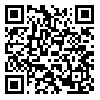BibTeX | RIS | EndNote | Medlars | ProCite | Reference Manager | RefWorks
Send citation to:
URL: http://jdm.tums.ac.ir/article-1-263-en.html
Background and Aim: Dentists are exposed to mercury from dental amalgam in their routine occupational practice. Excess exposure to mercury is harmful and the measurement of mercury content of urine is a reliable and valid assessment of the level of mercury exposure from dental amalgam. The aim of this study was the measurement of urine mercury in dentists of Tehran and assessment of some possible related factors.
Materials and Methods: This cross-sectional study was performed randomly on 211 dentists in all regions in Tehran city (center, north, south, west, and east) between 1381 and 1383. Dentists were asked to give a sample of urine in the day of visit and to complete a questionnaire consisting of variables such as age, working history, handling of amalgam, environmental parameters and general health situation. Urine samples were analyzed by cold vapour atomic absorption spectrophotometry. Data were analyzed by Kruskall Walis, Kendall and Mann Whitney tests, with p<0.05 as the limit of significance.
Results: The mean of urine mercury content in Tehran dentists was 3.1 (± 3.95) which was lower than the international TLV (Threshold Limit Value). There was a significant relation between urine mercury level and working hours per day (P=0.006). This relation was observed with working hours per week too (P=0.006). In general dentists, there was a positive relation between urine mercury and age (0.008) as well as the practicing years (P=0.034). A significant relation was found between urine mercury and the number of amalgam repairs and replacements in restorative specialists (p=0.039). There was a significant relation between the number of amalgam fillings in the mouth and urine mercury in general practitioners (p=0.027). The type of amalgam (predosed capsules or bulk powder) had a significant effect on the urine mercury content (P=0.001). There was no significant relation between urine mercury and other variables of the study such as the squeezing of triturated amalgam, storage method of residual amalgam, method of storing mercury and office ventilation.
Conclusion: Based on the results of this study, the mean urine mercury content of dentists of Tehran was below the international TLV. The use of precapsulated amalgams had significant effect on the urine mercury. Most of the dentists were working in public or semiprivate clinics, so it is concluded that the level of general hygiene and specially mercury hygiene in these centers seems to be acceptable.
Received: 2005/05/29 | Accepted: 2006/06/24 | Published: 2013/08/18
| Rights and Permissions | |
 |
This work is licensed under a Creative Commons Attribution-NonCommercial 4.0 International License. |




